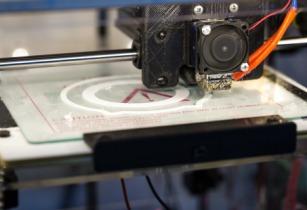3D printing will eventually help boost companies profitability and market shares in certain industries, but these developments are not likely in the next five years, said a report by Moodys Investors Service
Expected rapid growth in the adoption of 3D printing within commercial manufacturing is credit positive generally for the industry segment that makes printers and related software, according to the report.
Despite significant momentum for corporate investments in industrial 3D printing and widespread optimism over future applications of the technology, 3D printing will not account for a significant share of manufacturing sector activity for many years. With a few exceptions, no immediate or significant credit effects is expected from the growth of 3D printing across most existing manufacturing industries and companies, says Moody's Investors Service in a new report.
"For 3D printing, several factors weigh on the overall utility of the technology in high-volume production, including the high cost of printers and specialised technicians compared with alternative technologies, the frequent need for additional machining after printing and the long amount of time needed to print each," said Moody's vice-president Jonathan Siegel.
Moody's says the case for replacing industrial manufacturing on a wider scale is not yet proven. Where scale is needed for high-production runs, the economics are better suited to using traditional processes to keep marginal costs down. Advantageous use of the technology includes rapid prototyping, the production of unique and customised items, and the manufacturing of parts with some structural complexity.
In certain manufacturing subsectors, companies expanding their use of 3D printing technology will eventually experience credit positive profitability and market share improvements. The eyewear and footwear industries are among the manufacturers expected to have the most significant near-term growth prospects for using 3D printing technology. Other industries expected to benefit from 3D printing technology include aerospace, medical devices, automotive and capital equipment.






